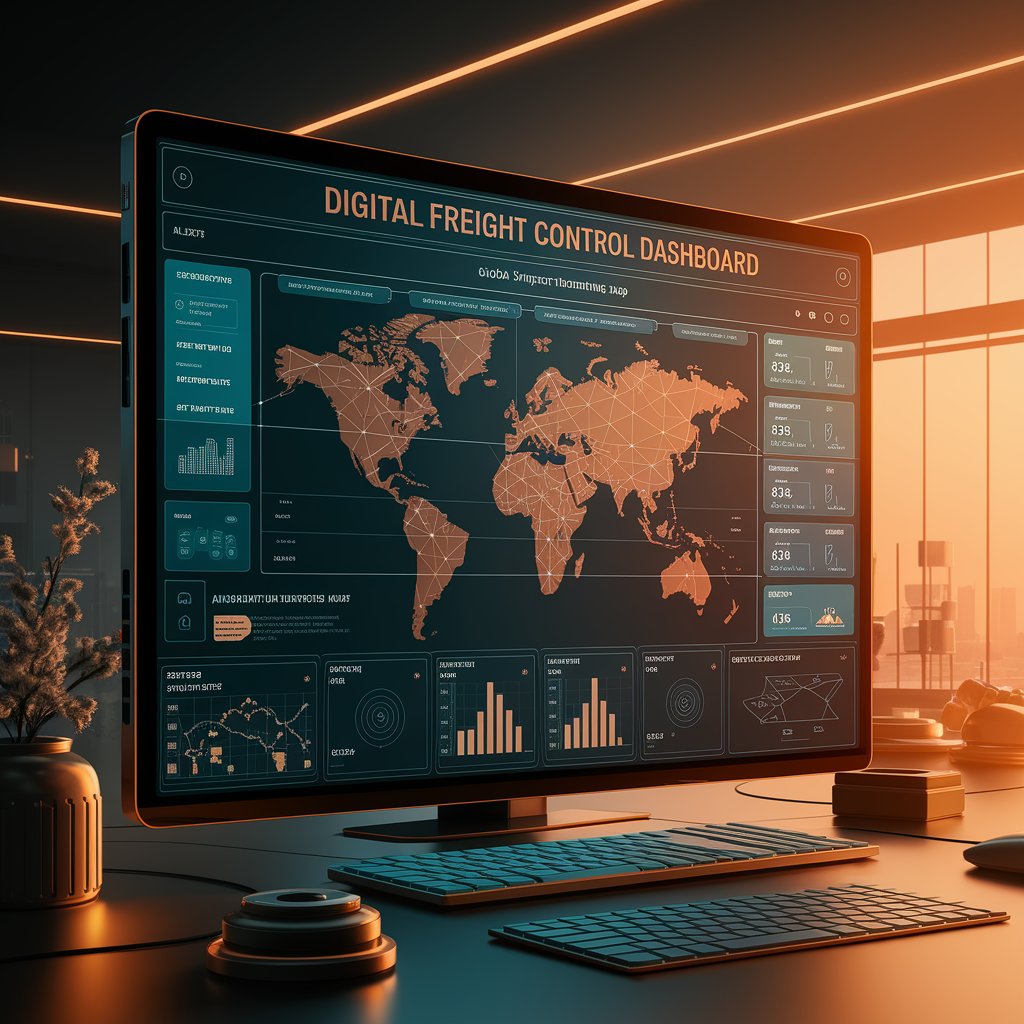Digital Freight Control: Total Visibility and Automation for Modern Logistics

Introduction
Linbis changes that with digital freight control — a unified system that combines real-time visibility, automation, and analytics to help logistics teams monitor, manage, and optimize every shipment with precision.
With Linbis, freight management becomes connected, intelligent, and fully digital.
Step 1: Unified Freight Ecosystem
Linbis starts by integrating all your logistics systems into a single control hub:
- TMS (Transportation Management System): shipment creation, routing, and dispatch.
- WMS (Warehouse Management System): inventory, receiving, and outbound coordination.
- CRM and ERP systems: customer orders, billing, and accounting.
- Carrier APIs: live data from airlines, shipping lines, and trucking companies.
- IoT sensors and GPS: real-time tracking for containers, trucks, and cargo.
This unification creates an end-to-end digital freight environment where every movement and status update is tracked automatically.
Step 2: Real-Time Freight Monitoring
Linbis delivers live control and visibility across the entire freight journey:
- Track all shipments globally by mode, carrier, or customer.
- Monitor real-time location and estimated arrival times.
- Detect delays, route deviations, or idle time instantly.
- Access digital documents and proof of delivery from any device.
Every piece of freight data flows automatically into the control dashboard — no calls, no emails, no spreadsheets.
Step 3: Automated Workflows and Process Control
Freight management often involves hundreds of repetitive tasks — Linbis automates them all:
- Creates shipments directly from quotes or orders.
- Generates documents like B/L, invoices, and customs forms.
- Updates clients automatically with tracking notifications.
- Triggers billing and settlements upon delivery confirmation.
This ensures processes run consistently, reducing manual workload and human error.

Step 4: Predictive Freight Intelligence
Linbis integrates AI and predictive analytics to elevate freight control from monitoring to forecasting:
- Predicts potential shipment delays based on live conditions.
- Identifies underperforming carriers or routes.
- Recommends reallocations or rescheduling for optimization.
- Provides cost efficiency insights for continuous improvement.
This gives logistics teams the power to make proactive, data-driven decisions.
Step 5: Freight Cost and Performance Analytics
Controlling freight also means controlling costs — Linbis makes it easy:
- Monitors shipping costs and margins by client or carrier.
- Tracks fuel usage, demurrage, and detention fees.
- Compares contract rates vs. actual costs.
- Generates KPI reports automatically for management and clients.
Every dollar and minute spent on freight becomes measurable — and optimizable.
Step 6: Digital Compliance and Security
In an era of digital trade, compliance is critical.
Linbis ensures that freight operations meet all standards through automation:
- Electronic document storage for audits and inspections.
- Customs data synchronization for cross-border compliance.
- Secure encryption protocols to protect sensitive shipment data.
- Access control settings for different teams and regions.
You maintain complete digital control over compliance, documentation, and security.
Step 7: Continuous Optimization
Every freight cycle strengthens Linbis’s intelligence engine:
- Learns from historical shipping data to improve route planning.
- Adapts to seasonal demand and carrier performance.
- Suggests new automation workflows for improved efficiency.
- Integrates with evolving industry APIs and global data sources.
Your freight operations keep improving — automatically.

Advanced Features
- Centralized freight control dashboard.
- End-to-end automation of logistics workflows.
- AI-driven predictive analytics and alerts.
- Cost and KPI tracking with smart reporting.
- Digital compliance and document management.
Real-World Example 🚢
A freight forwarder in Miami adopted Linbis digital freight control to manage air, sea, and road shipments across Latin America.
After 90 days:
- Operational visibility improved by 80%.
- Manual task time reduced by 60%.
- Shipment errors decreased by 35%.
- Customer satisfaction increased by 40%.
They now manage all freight from one intelligent control center — 100% digital.

Benefits 📈
- Visibility: See all shipments and documents in real time.
- Efficiency: Automate every freight management process.
- Control: Monitor costs, performance, and compliance easily.
- Agility: React instantly to disruptions or market shifts.
- Scalability: Manage multiple carriers and regions seamlessly.
Conclusion
With digital freight control, Linbis gives logistics providers the tools to run operations with precision, automation, and confidence.
By unifying data, automating workflows, and adding AI-driven insights, Linbis turns traditional freight management into a fully connected, predictive logistics experience.
In modern logistics, control isn’t manual — it’s digital.
